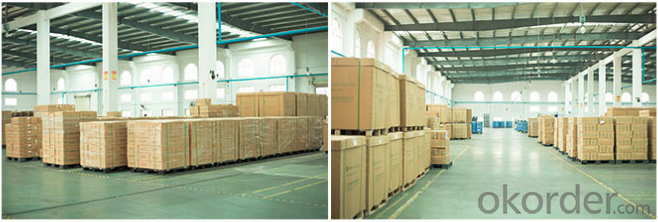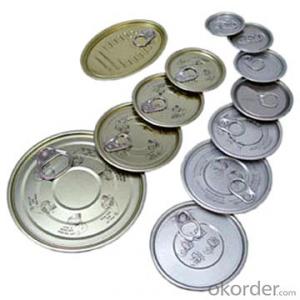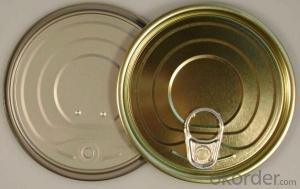Half Open EOE, Alluminium Material,50mm Size(202#)
- Loading Port:
- China main port
- Payment Terms:
- TT OR LC
- Min Order Qty:
- 100000 pc
- Supply Capability:
- 10000000 pc/month
- Option:
- Alluminium Material 202#
OKorder Service Pledge
OKorder Financial Service
You Might Also Like
Item specifice
Brief Details
Metal Type: Aluminum
Industrial Use: Beverage
Use: Beer
Printing Handling: Embossing
Custom Order: Accept
Model Number: 202#
Size(mm): 5
Shape: Round
Feature: Partial open
Packing: Paper tube+pallet+export carton
Specifications
Name | peel off lid |
Item No. | 202 # |
Shape/type | Round |
Size(mm) | Dia 50 |
Coating | Clear inside & outside |
Material | Aluminum |
Pcs/20 GP’ | 3,710,000 Customize packing: as clients’ requests. |
Features | 1.Used for packaging of beverage,such as juice,enegry drink, beer,etc.Particulary suitable for sodas. 2.Coating can be according to customer required. |
Packaging & Delivery
Packaging Details: | 3,710,000 pcs per 20 GP'. |
Delivery Detail: | 7-30 days |
Our packing
We could offer package as customers require, by carton or by wooden pallet.

FAQ
1.Q: What is the material and monthly output of EOE?
We can offer both tinplate and aluminum material made EOE, our output reaches more than 1000000000pcs per month.
2.Q:Could you offer samples for our testing?
YES, we could offer sample, but we hope you send us testing report at early time;
3. Q:Can you make new mold with customized size?
YES, We can make new mold for our cutomer, if the qty reach our requirement.
- Q:What are the main factors affecting the price of tinplate?
- The main factors affecting the price of tinplate include the cost of raw materials, such as tin and steel, supply and demand dynamics, global economic conditions, currency exchange rates, changes in government policies and regulations, and market competition. Other factors like transportation costs, energy prices, and the overall health of the manufacturing sector can also impact the price of tinplate.
- Q:What are the main factors affecting tinplate coil surface quality?
- The main factors affecting tinplate coil surface quality include the quality of the raw materials used, the manufacturing process, the level of cleanliness and maintenance in the production environment, the handling and storage conditions, and the presence of any external contaminants or defects.
- Q:What are the common storage and handling requirements for tinplate?
- Common storage and handling requirements for tinplate include keeping it in a dry and clean environment to prevent corrosion, avoiding exposure to extreme temperatures, and ensuring proper stacking to prevent damage to the material. It is also important to handle tinplate with care to avoid any bending or scratching that could affect its quality and appearance.
- Q:Can tinplate be used for military applications?
- Yes, tinplate can be used for military applications. Tinplate, which is coated with a thin layer of tin to prevent corrosion, offers excellent durability and protection against rust. This makes it suitable for various military equipment and supplies such as ammunition cans, food containers, and other storage solutions. Additionally, tinplate is a cost-effective material that can withstand harsh environments and provide long-lasting performance, making it a reliable choice for military applications.
- Q:What are the main challenges in the disposal of tinplate products?
- The main challenges in the disposal of tinplate products include recycling limitations, contamination risks, and the need for proper waste management infrastructure. Tinplate products are often coated with other materials, such as plastic or paint, which makes recycling more difficult. Additionally, if tinplate products are not properly separated from other waste streams, they can contaminate recycling processes. Lastly, the efficient disposal of tinplate products requires adequate waste management infrastructure to handle the volume and ensure proper treatment and disposal methods are implemented.
- Q:Can tinplate packaging be used for gardening products?
- Yes, tinplate packaging can be used for gardening products. Tinplate is a durable and corrosion-resistant material that can protect gardening products from moisture, sunlight, and other external elements. It is commonly used for packaging seeds, fertilizers, gardening tools, and other related products.
- Q:How does tinplate perform in extreme temperatures?
- Tinplate performs well in extreme temperatures due to its high melting point and excellent heat resistance properties. It remains stable and maintains its mechanical strength even under extreme heat or cold conditions, making it a reliable material for various applications in extreme temperature environments.
- Q:How has tinplate evolved over the years?
- Tinplate has evolved significantly over the years, primarily due to advancements in technology and manufacturing processes. Originally, tinplate was made by coating iron or steel with a thin layer of tin to prevent corrosion. However, the process has evolved to include various coatings, such as organic, chrome, and polymer coatings, that offer improved protection and durability. Additionally, the production techniques have become more efficient, allowing for higher quality and faster manufacturing of tinplate products. Moreover, the application of tinplate has expanded beyond traditional uses in packaging to include automotive, construction, and electrical industries, further driving its evolution.
- Q:What are the food safety regulations for tinplate packaging?
- The food safety regulations for tinplate packaging vary depending on the country and region. However, in general, tinplate packaging must meet certain standards to ensure the safety of the food inside. These standards typically include requirements for the quality of the tinplate material, such as being free from contaminants and durable enough to prevent leaks or damage. Additionally, regulations may cover aspects like the use of food-grade coatings on the tinplate, proper labeling and identification of the packaging, and compliance with hygiene and sanitation practices during the manufacturing process.
- Q:How is tinplate affected by extreme temperatures?
- Tinplate is minimally affected by extreme temperatures due to its high melting point and excellent heat resistance properties. It remains stable and does not undergo significant changes in its physical or chemical properties even in extremely hot or cold conditions.
1. Manufacturer Overview |
|
|---|---|
| Location | |
| Year Established | |
| Annual Output Value | |
| Main Markets | |
| Company Certifications | |
2. Manufacturer Certificates |
|
|---|---|
| a) Certification Name | |
| Range | |
| Reference | |
| Validity Period | |
3. Manufacturer Capability |
|
|---|---|
| a)Trade Capacity | |
| Nearest Port | |
| Export Percentage | |
| No.of Employees in Trade Department | |
| Language Spoken: | |
| b)Factory Information | |
| Factory Size: | |
| No. of Production Lines | |
| Contract Manufacturing | |
| Product Price Range | |
Send your message to us
Half Open EOE, Alluminium Material,50mm Size(202#)
- Loading Port:
- China main port
- Payment Terms:
- TT OR LC
- Min Order Qty:
- 100000 pc
- Supply Capability:
- 10000000 pc/month
- Option:
- Alluminium Material 202#
OKorder Service Pledge
OKorder Financial Service
Similar products
New products
Hot products
Related keywords



























